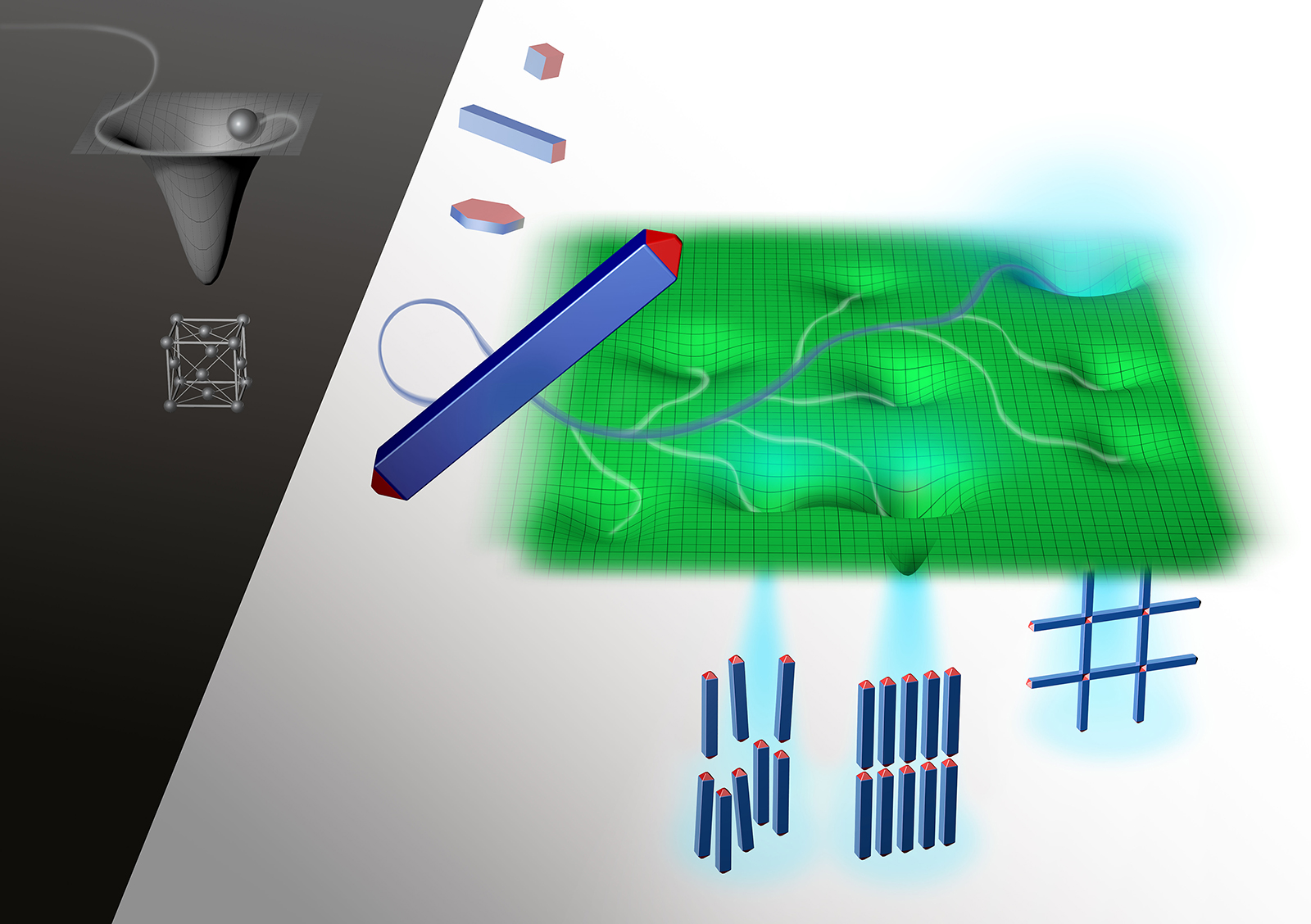
A matter of orientation
German Research Foundation approves collaborative research centre for the study of directional properties of particles and their superstructures
Many artificial materials can be built on the particle level. The properties of this material - whether it is hard or soft, electrically conductive or insulating, water-repellent or magnetic - are determined by the properties of the particles themselves, and especially by the arrangement of the materials’ building blocks. This phenomenon regarding directional properties is called anisotropy. Those who can control this arrangement can produce customized artificial materials with completely new properties. In order to carry out research on the controlled arrangement of particles, the German Research Foundation (DFG) approved the creation of a new collaborative research centre (SFB) at the University of Konstanz on 25 May 2016. The Collaborative Research Centre SFB 1214 "Anisotropic Particles as Building Blocks: Tailoring Shape, Interactions and Structures "brings leading researchers in the fields of chemistry and physics together in order to carry out pioneering work on so-called anisotropic (directionally dependent) properties of particles and the resulting structured material structures. The collaborative research centre is funded with a total of around 7.5 million euros and includes 15 sub-projects as well as a new Centre for Particle Analysis and a Research Training Group for doctoral students at the University of Konstanz. The SFB 1214 will begin its work on 1 July 2016 and will be initially funded for four years.
Nature offers intriguing examples of materials with outstanding performance. In many cases, nature has been unrivalled so far. Wood and bone are prominent representatives: The properties of these materials are based on a precise and complex, directional arrangement of their particles. "A comparable organization of synthetic matter is far beyond the current state of the art", explains Professor Helmut Cölfen, professor of physical chemistry at the University of Konstanz and speaker of the SFB 1214. "Our initiative aims to lay the foundations for understanding and utilizing structural anisotropy in order to make a new generation of material with tailor-made properties possible," Cölfen says. Anisotropic particles are especially interesting for material science, as they offer a promising spectrum of mutual particle interactions. Nevertheless, this pioneer area of material science has hardly been explored.
To reach the goals of the SFB, comprehensive expertise in synthesis, analysis and theory is required, as well as the link between the research areas hard and soft matter. "This multi-faceted basis is uniquely provided in Konstanz, building on long standing research in soft matter physics recently complemented by chemistry specifically directed towards the planned SFB," explains Cölfen. The collaborative research centre is part of the research area molecular nano and material science, one of the four profile areas of the University of Konstanz.
The 15 sub-projects of the SFB will deal with the synthesis of anisotropic particle structures and their interactions, with so-called particle superstructures as well as with the development of analytical methods. The combination of experimental and theoretical methods as well as the cooperation between chemists and physicists is characteristic for all of the sub-projects. One of the long-term goals is to develop production principles for particle-based materials – with application fields for a new generation of optically, electronically, magnetically and mechanically optimised materials.
